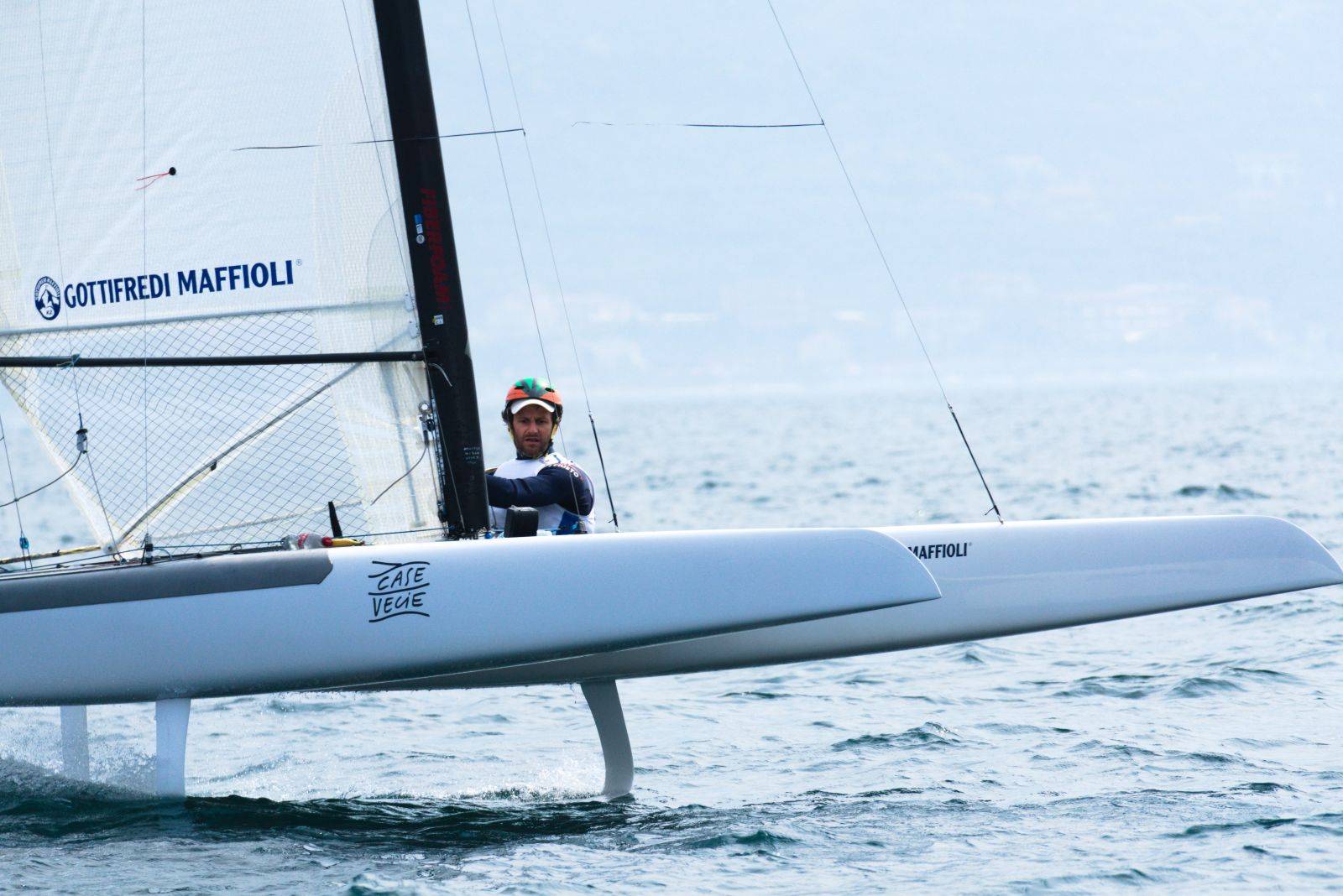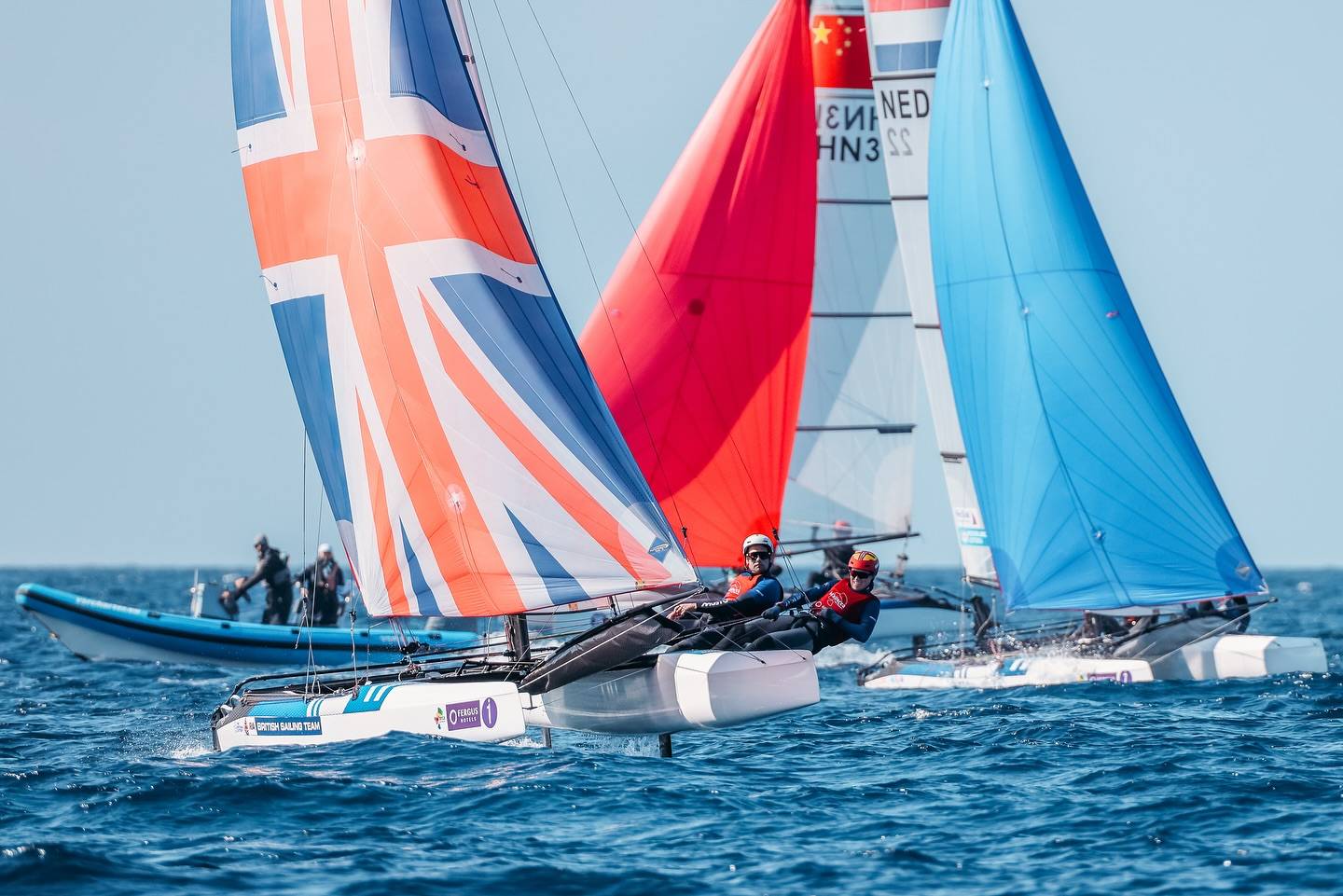Jules Verne Trophy: Ocean Crossing 101 by Spindrift Racing
All Images Team Spindrift. — Spindrift 2 (ex Banque Populaire 5) is currently attempting to beat Peyron’s Round the World record, in the process they are streaming daily videos, reports and also a series of Ocean Crossing knowledge base for schools in France & Belgium.
 What a clever project to get kids following a
What a clever project to get kids following a
monster trimaran flying +30knots across the Globe and learn a little of Geography, Marine Life & Weather in the process.
I’m 43 now, when I was a kid for birthdays we received as gifts Jules Verne or Salgari’s books among others authors.
 Sometimes I wonder how is possible that my
Sometimes I wonder how is possible that my
generation has more gral knowledge than current ones with the instant access to information available today.
Spindrfit’s Out of the Class project within their Globe crossing is a great way to use current media technologies to provide kids and grownups alike a new way to educate ourselves even further.
Follow Spindrift 2 Jules Verne voyage at their dedicated website: spindrift-racing.com/jules-verne/en/log-book
Current Record status & position:
Start of day 11 at 07:00 GMT
Live Tracking Info at spindrift-racing.com/jules-verne/fr/live
Below Dona Bertarelli describes their ‘Out of the Classroom’ reports:
—–
“I want to thank all our partner schools, in France and Switzerland, and the 2,000 students who are following us. Whenever I can, I will be answering your many questions throughout this journey around the planet, a journey that we are taking together to discover the wonders of our world.
With all the crew of Spindrift 2, through our observations and our encounters, not only with marine life, but also with the islands and peninsulas that we pass, with the meteorological phenomena we experience, and with the birds and the stars that accompany us during our voyage, we will help you to live this adventure, like Phileas Fogg in Jules Verne’s famous book. We are calling our Spindrift for Schools series – Out of the Classroom.
Anticyclones and the Doldrums
Questions from the pupils of the Vincent Van Gogh School in Baguer Morvan (France) – Teacher Karine Duprey
What is an anticyclone?
An anticyclone, or high, as it is often known, resembles a hill with a totally flat summit. Hills have sloping sides, which in meteorological terms means that there is wind. At the flat part on the summit, nothing very much happens: there is hardly any wind, just blue sky in the summer or persistent fog in the winter. At the seaside in the summer, beachgoers like anticyclonic weather, which brings warm temperatures, blue skies and sunshine. It is a great time to go to the beach, but is frustrating for us sailors, as there is not much wind for our sails.
We will see further on when we talk about the Intertropical Convergence Zone, known more familiarly to sailors as the doldrums. It is an area where masses of hot, damp anticyclonic air come together or converge, creating an unusual weather situation.
What are the doldrums and where does the name come from?
The doldrums is the name given to a meteorological zone where the north-east winds of the northern hemisphere and the south-east winds of the southern hemisphere converge off the coast of Sierra Leone. They form a cone-shaped transitional zone towards South America, like a belt around the Earth’s equator..
– See full article at: spindrift-racing.com/jules-verne/drupal/en/log-book/s4s-anticyclone-en#sthash.A4a3TwEl.dpuf
–






























I just heard that my great sailing friend and former CEO of Hobiecat Europe has passed. May The endless oceans…
...Report was sent by an F18 Sailor, if you want Hobies reported send your own, we'll publish as usual. Cheers.
Looks like in your report the Hobies are not really present. Suggest to rewrite the article.
Thanks for the great report Wik. Great battle.
If I correctly read the results the overall winner this year is a Hobie16